A sumptuous setting of terraces and thriving avenues, waterfalls, nymphaeum, caverns, and caves, the magnificent Villa d’Este in Tivoli, a short distance from Rome, was declared UNESCO World Heritage Site in 2001.
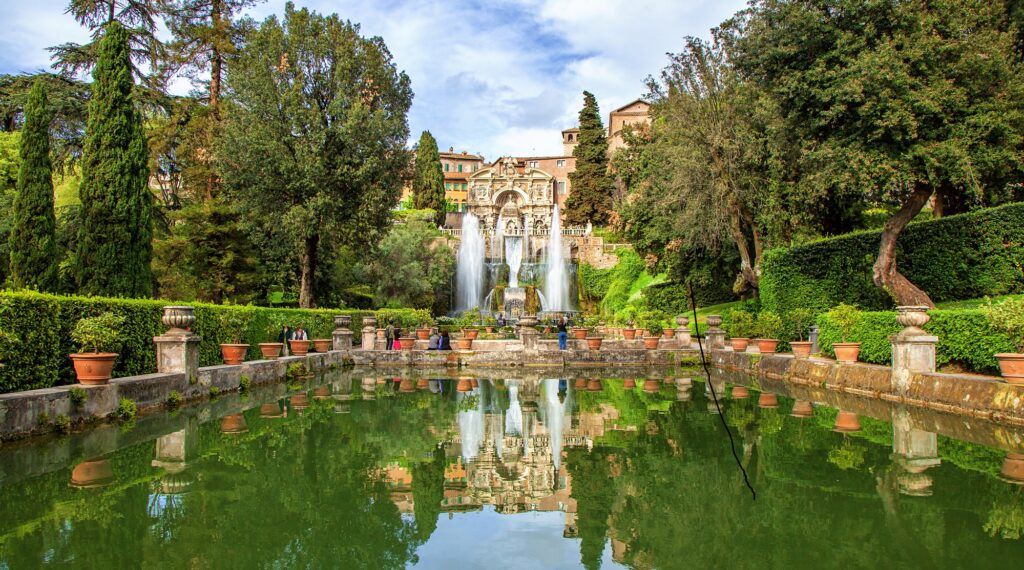
The majestic Gardens of Villa D’Este
This Renaissance masterpiece, commissioned in the sixteenth century by Cardinal Ippolito d’Este, son of the famous Lucrezia Borgia, is nowadays one of the most visited attractions in Italy.
A beautiful Palace dominates the amazing garden, adorned with fountains, nymphaeums, water features, and even a water-powered organ.
In order to carry out his majestic project, the Cardinal, who also covered the charge of Governor in Tivoli, managed to obtain the permission to largely exploit the marble from the Tomb of Cecilia Metella on the Appia Antica in Rome.
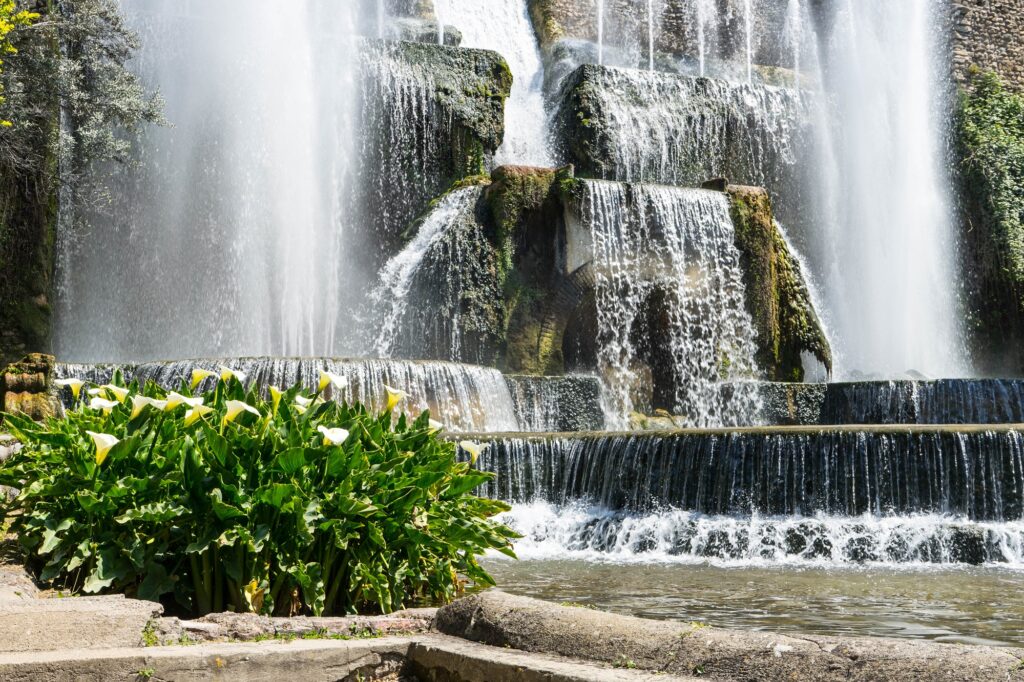
The large quantity of water feeding the fountains of Villa D’Este
An ingenious system to supply a copious quantity of water to all the fountains, was invented by the scholar Pirro Ligorio. He ordered the construction of an ambitious underground water shaft, which, after crossing the whole Tivoli Hill, reached the Aniene River, whose waters flew into the impressive Fontana dell’ Ovato and, from there, to all the other fountains.
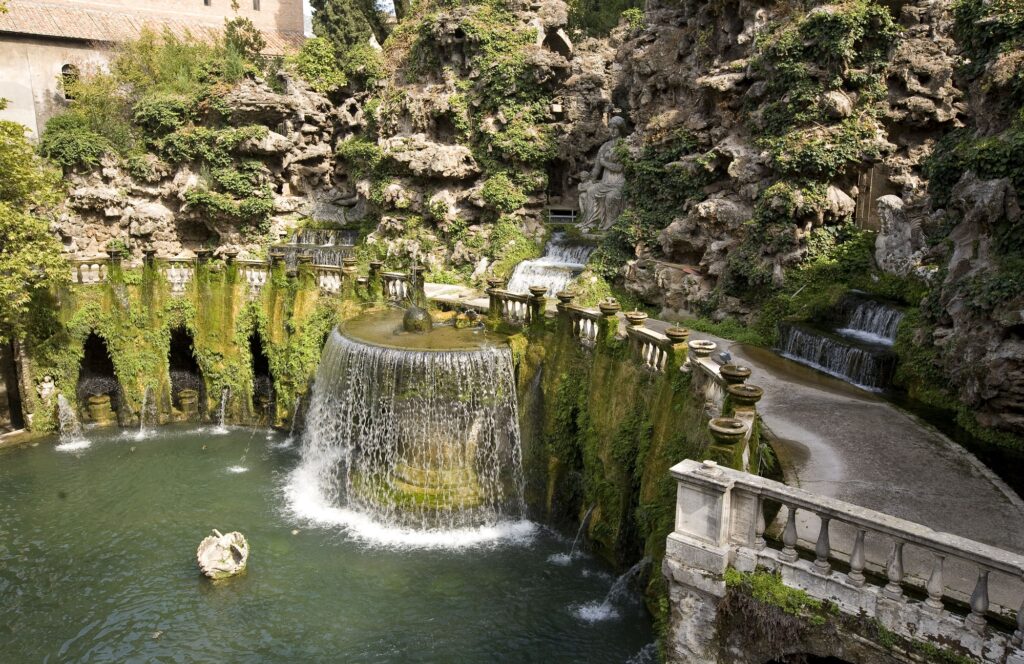
The Fontana dell’ Ovato
The imposing Fontana dell’Ovato, the most renowned in Villa D’Este, depicts the three rivers originating from the Tiburtini Mountains: the Aniene, the Erculaneo and the Albuneo.
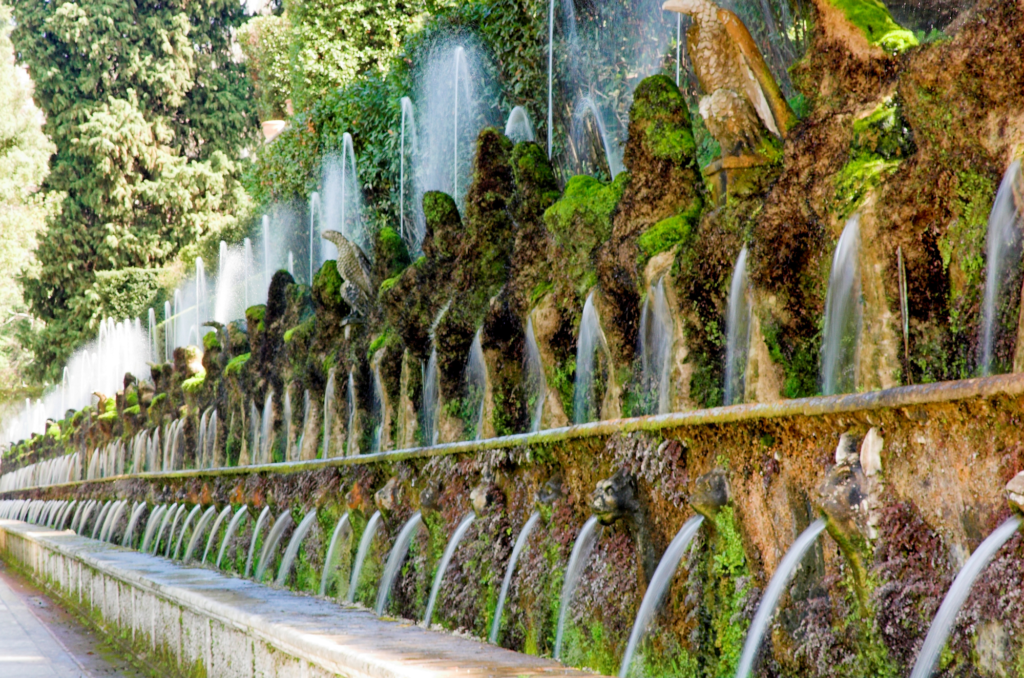
The Avenue of the Hundred Fountains
The three spouts of water are then distributed on three levels along the wonderful Viale delle Cento Fontane, where one hundred small fountains, in the shape of obelisks, eagles and lilies, lead up to the Fontana della Rometta, portraying the twins Romulus and Remus and the she-wolf.
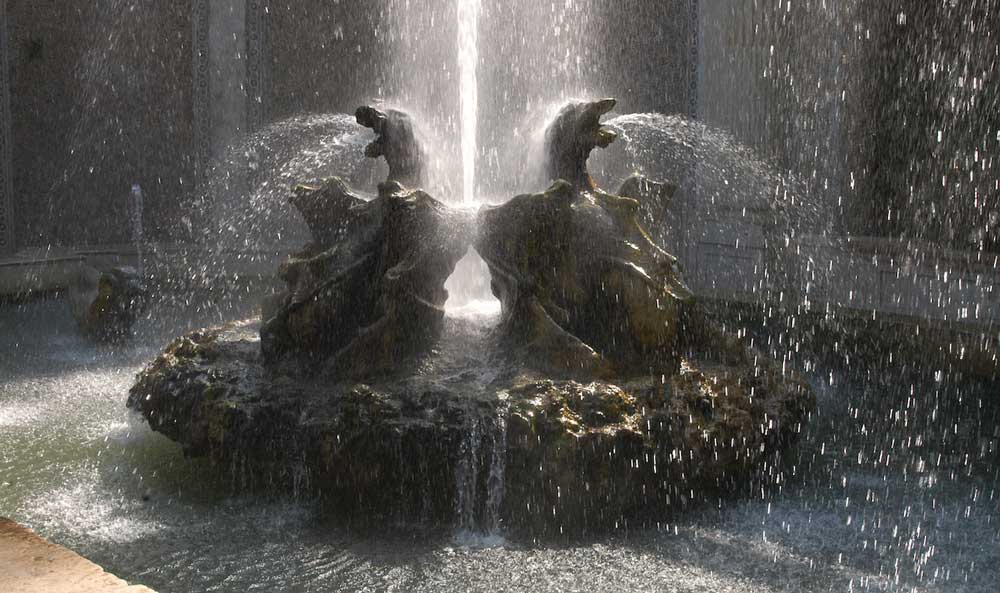
The Fontana dei Draghi in Villa D’Este
Also noteworthy are the Fontana dei Draghi, with four dragons in the centre spitting upwards, and the Fontana del Pegaso, surmounted by a large statue of the mythological winged horse.
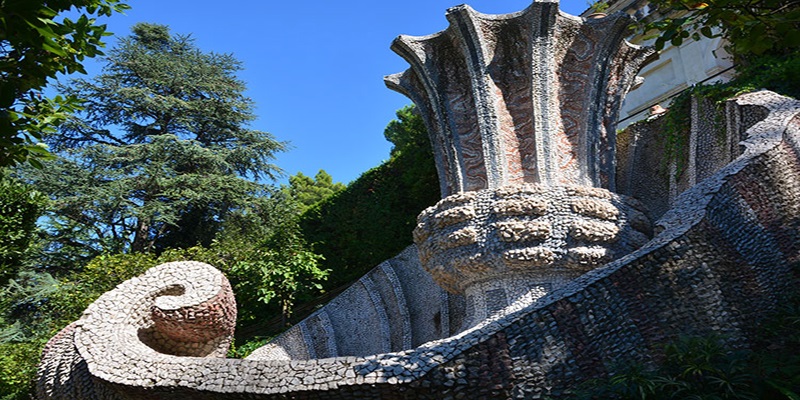
Fontana del Bicchierone – photo by www.tivolivilladeste.com
The Fontana del Bicchierone, commissioned to Gian Lorenzo Bernini in 1660, preserves a tall chalice inside a shell, also to be found in another outstanding masterpiece of Bernini, the Fontana del Tritone in Piazza Barberini in Rome.
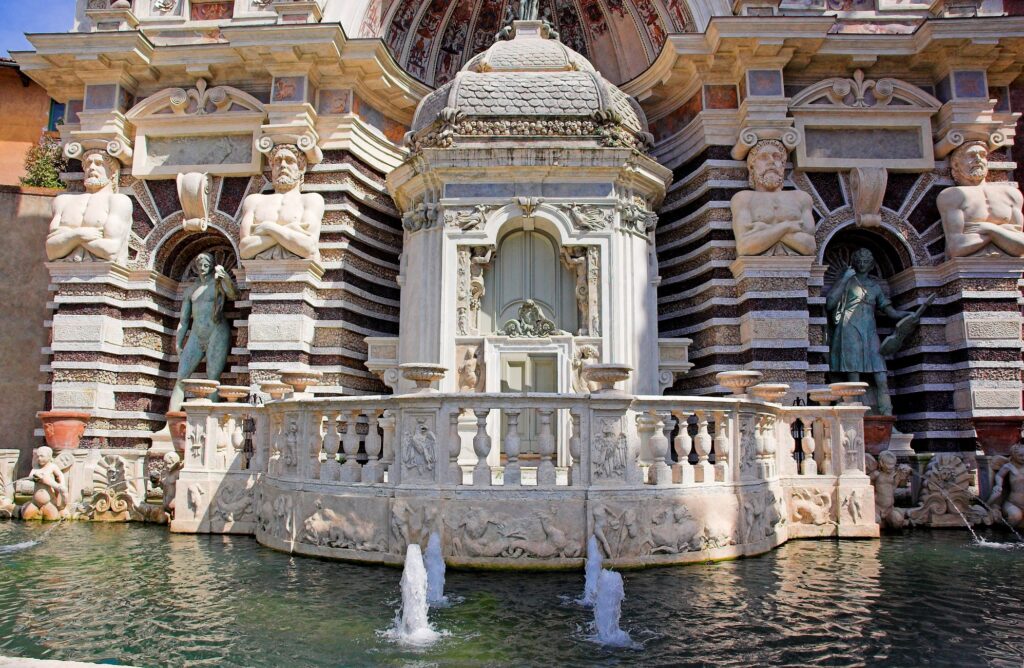
The Fontana dell’Organo in Villa D’Este
The remarkable and original Fontana dell’Organo hides a complex hydraulic system, which allows the flowing water to reproduce musical sounds. It is estimated that the entire project, aimed to amaze and entertain the noble Italian and European Courts, costed an enormous sum for the time, one million gold Ecus!
Today Villa d’Este is visited, not only by thousands of Italian and foreign tourists, but also by artists and landscape architects, who came here to closely admire this extraordinary example of a perfect relationship between man and nature.
